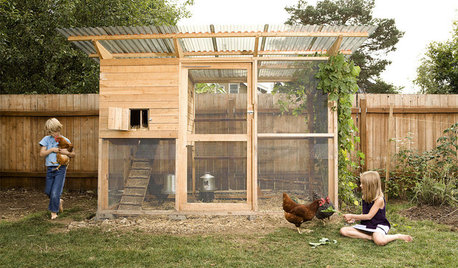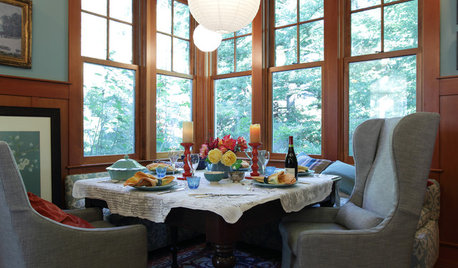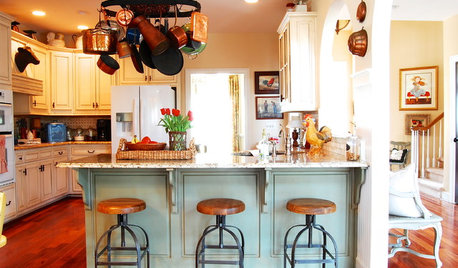mute rooster?
tracerracer
15 years ago
Related Stories

KITCHEN DESIGNExpert Panel: Kitchen Color
Bright kitchen or sedate? Colorful or muted? Get expert insight from pro designers on choosing the right color look for your cooking space
Full Story
PRODUCT PICKSGuest Picks: 20 Finds to Cluck About
If you have or love chickens, you’ll flock to these coops, themed accessories, artwork and more
Full Story
LIFEThe Polite House: How to Deal With Noisy Neighbors
Before you fly off the handle, stop and think about the situation, and follow these steps to live in harmony
Full Story
FUN HOUZZHouzz Quiz: What's Your Decorating Style?
Answer these 9 questions to find out what decorating style suits you best
Full Story
DECORATING GUIDESSo Your Style Is: French Country
With an artful balance between earthy and chic, French country style infuses a home with incomparable warmth and welcome
Full Story
PRODUCT PICKSGuest Picks: White Dinnerware for the Holidays and After
Table settings in white can take you through the entire entertaining season and beyond, whether your style is casual or formal
Full Story
ARCHITECTUREDesign Workshop: Materials That Tell a Story
See how wood, concrete and stone convey ideas about history, personal taste and much more
Full Story
HOUZZ TOURSMy Houzz: French Country Meets Southern Farmhouse Style in Georgia
Industrious DIYers use antique furniture, collections and warm colors to cozy up their traditional home
Full Story
LIGHTINGHow to Get Your Kitchen Island Lighting Right
Here are some bright ideas on when to use chandeliers, pendants, track lights and more
Full Story
Get the Look: Sophisticated Country Style
15 Ways to Keep the Farmhouse, Lose the Chicken Coop
Full Story





sullicorbitt
tracerracerOriginal Author
Related Professionals
Allentown Landscape Architects & Landscape Designers · Danbury Landscape Architects & Landscape Designers · Elwood Landscape Architects & Landscape Designers · Tempe Landscape Contractors · Aloha Landscape Contractors · Bainbridge Island Landscape Contractors · Roswell Landscape Contractors · South Portland Landscape Contractors · West Chicago Landscape Contractors · Alsip Fence Contractors · Austin Fence Contractors · Georgetown Fence Contractors · King City Fence Contractors · Columbia Decks, Patios & Outdoor Enclosures · North Myrtle Beach Decks, Patios & Outdoor Enclosuresvelvet_sparrow
organic_flutterby
seramas
thomashton
velvet_sparrow
thomashton
seramas